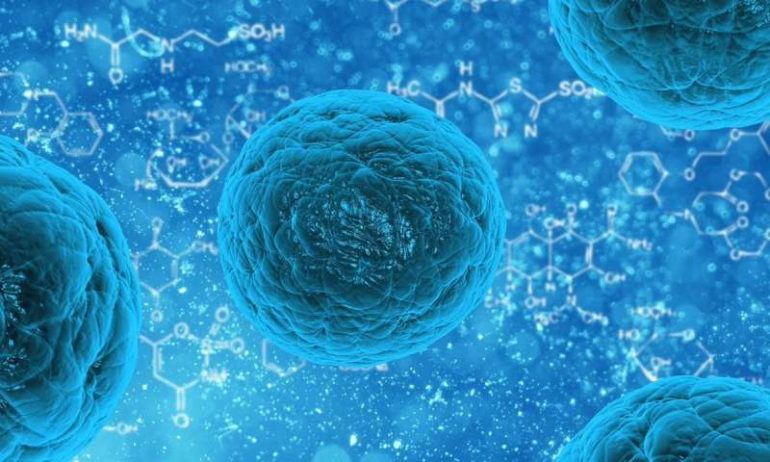Cells are the building blocks of life, present in every living organism. But how similar do you think your cells are to a mouse? A fish? A worm?
Comparing cell types in different species across the tree of life can help biologists understand how cell types arose and how they have adapted to the functional needs of different life forms. This has been of increasing interest to evolutionary biologists in recent years because new technology now allows sequencing and identifying all cells throughout whole organisms. “There’s essentially a wave in the scientific community to classify all types of cells in a wide variety of different organisms,” explained Bo Wang, an assistant professor of bioengineering at Stanford University.
In response to this opportunity, Wang’s lab developed an algorithm to link similar cell types across evolutionary distances. Their method, detailed in a paper published May 4 in eLife, is designed to compare cell types in different species.
For their research, the team used seven species to compare 21 different pairings and were able to identify cell types present in all species along with their similarities and differences.
Comparing cell types
According to Alexander Tarashansky, a graduate student in bioengineering who works in Wang’s laboratory, the idea to create the algorithm came when Wang walked into the lab one day and asked him if he could analyze cell-type datasets from two different worms the lab studies at the same time.
“I was struck by how stark the differences are between them,” said Tarashansky, who was lead author of the paper and is a Stanford Bio-X Interdisciplinary Fellow. “We thought that they should have similar cell types, but when we try analyzing them using standard techniques, the method doesn’t recognize them as being similar.”
He wondered if it was a problem with the technique or if the cell types were just too different to match across species. Tarashansky then began working on the algorithm to better match cell types across species.
“Let’s say I want to compare a sponge to a human,” said Tarashansky. “It’s really not clear which sponge gene corresponds to which human gene because as organisms evolve, genes duplicate, they change, they duplicate again. And so now you have one gene in the sponge that may be related to many genes in humans.”
Instead of trying to find a one-to-one gene match like previous methods for data matching, the researchers’ mapping method matches the one gene in the sponge to all potentially corresponding human genes. Then the algorithm proceeds to figure out which is the right one.
Tarashansky says trying to find only one-to-one gene pairs has limited scientists looking to map cell types in the past. “I think the main innovation here is that we account for features that have changed over the course of hundreds of millions of years of evolution for long-range comparisons.”
“How can we use the ever-evolving genes to recognize the same cell type that are also constantly changing in different species?” said Wang, who is senior author of the paper. “Evolution has been understood using genes and organismal traits, I think we are now at an exciting turning point to bridge the scales by looking at how cells evolve.”
Filling in the tree of life
Using their mapping approach, the team discovered a number of conserved genes and cell type families across species.
Tarashansky said a highlight of the research was when they were comparing stem cells between two very different flatworms.
“The fact that we did find one-to-one matches in their stem cell populations was really exciting,” he said. “I think that basically unlocked a lot of new and exciting information about how stem cells look inside a parasitic flatworm that infects hundreds of millions of people all over the world.”
The results of the team’s mapping also suggest there’s a strong conservation of characteristics of neurons and muscle cells from very simple animal types, such as sponges, to more complex mammals like mice and humans.
“That really suggests those cell types arose very early on in animal evolution,” Wang said.
Now that the team has built the tool for cell comparison, researchers can continue to collect data on a wide variety of species for analysis. As more datasets from more species are collected and compared, biologists will be able to trace the trajectory of cell types in different organisms and the ability to recognize novel cell types will improve.
“If you only have sponges and then worms and you’re missing everything in between, it’s hard to know how the sponge cell types evolved or how their ancestors have diversified into sponges and worms,” said Tarashansky. “We want to fill in as many nodes along the tree of life as possible to be able to facilitate this type of evolutionary analysis and transfer of knowledge across species.”
Cataloging breast cells to find cancer origins
More information:
Alexander J Tarashansky et al, Mapping single-cell atlases throughout Metazoa unravels cell type evolution, eLife (2021). DOI: 10.7554/eLife.66747
Provided by
Stanford University
Citation:
Researchers develop algorithm to compare cells across species (2021, May 25)
retrieved 25 May 2021
from https://phys.org/news/2021-05-algorithm-cells-species.html
This document is subject to copyright. Apart from any fair dealing for the purpose of private study or research, no
part may be reproduced without the written permission. The content is provided for information purposes only.



